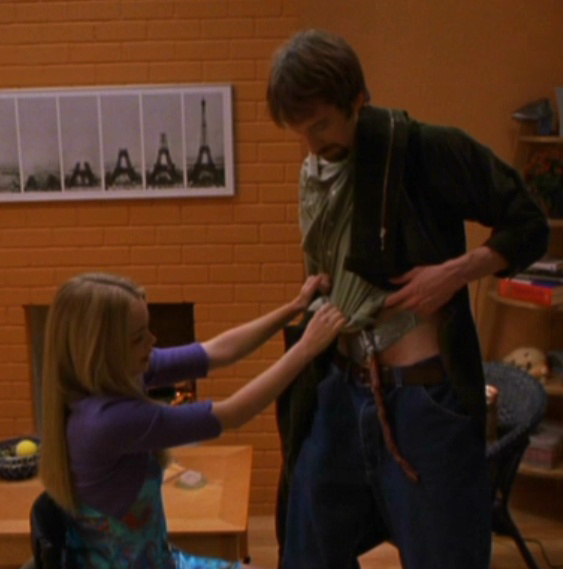What are the consequences of not severing it? I imagine you’d have the weirdest bellybutton on earth if nothing else.
Cheers!
This is an alternative birth method called “lotus birth” or more formally “umbilical non-severance” in which babies are left tethered to the delivered placenta until their cord desiccates and detaches from their body on its own, usually in 3-10 days, while applying salt to the placenta to increase the speed at which it dries. It will eventually fall off, however, after its delivery the placenta is no longer being supplied with the oxygenated blood it needs to survive, and becomes necrotic (dead). This can act as an easy entry point for infectious organisms to enter the neonate, and can result in life-threatening infections. Neither the American College of Obstetrics or the American Academy of Pediatrics have explicit guidance statements as to whether this should be recommended against. AAP has published that there have been multiple case reports of severe infections with various bacteria secondary to this practice.
This should not be confused/conflated with Delayed Cord Clamping, which is waiting 30-60 seconds after the baby’s delivery for some of the residual fetal blood in the placenta to be delivered to the baby’s circulation to prevent anemia. This has good evidence for benefit to the baby, is recommended by ACOG, and is basically standard of care in the US.
Source: ACOG and AAP publications, also I’m a 4th year medical student that has completed OBGYN rotations
… desiccates… in 3-10 days, while applying salt…
Forbidden jerky
You joke, but there are literally people who eat their own placenta. I know someone who did. Crystals and essential oils and energy healing and all that, you know. I don’t talk about that kind of stuff with her because for some reason we just can’t seem to find common ground lol
I’ve heard of people getting placenta pills to deal with the anemia after birth. I don’t plan on having kids and thus have never been interested enough to research it.
Iron supplements also work 😂
The placenta is not pleasant to look at, so I can imagine pills make it more palatable. I don’t think a lot of study has been done on the effects of eating placenta after birth, but it’s technically a separate organ that belongs to the baby.
So no matter how you spin it, they’re eating baby organs.
Doesn’t actually belong to the baby, it’s a hybrid organ that contains DNA and tissue that comes from both the mother and the fetus.
Pop that sucker into a blender and you don’t have to worry about how it looks. Mmm Mmm placenta milkshake.
Here’s a relevant link to an 2000’s Finnish tv travel/cooking show Madventures and their placenta dish. I think I’d rather take it in pill form.
Ive heard of people using the placenta pills to help reduce postpartum depression. Not sure if that works. But research has been done to show it reduces bleeding after birth if consumed immediately.
Terrible source but its late and im tired: “Postpartum hemorrhage has been controlled by using a small quarter-size piece of placenta placed in the mother’s cheek or chewed by the mother first and then held between her cheek and gum” https://www.midwiferytoday.com/mt-articles/the-power-of-placenta/
Yeah, my critical thinking self wonders what kind of magic makes bleeding stop by putting a piece of meat in your cheek.
My money is on it being the elemental power of bullshit. It’s likely the same ingredient that makes homeopathy actually ‘do’ anything: time i.e., it would have happened at that point regardless.
Bleeding stops when the uterus shrinks back down so the huge open wound left behind by the placenta becomes a small wound. Oxytocin makes that happen, and you get that by just holding your baby. I don’t know how eating the placenta would contribute.
hormones? the body has many magic chemicals.
I’m not sure it’s the meat…I think it might be the chemicals in the meat. This isn’t my hill to die on, but you’re totally OK to stick to the modern Dr’s advice if you hemorrhage after childbirth. I can’t think anyone will ever forcefeed you placenta 🙃
Oh, surely there must be another way! No thank you! 🙃
Petocin injection will do it if memory serves.
Maybe you could bond over dinner and a fine glass of urine.
Lots of mammals eat the placenta. Eating it recovers some nutrients for the mother. No woo required.
As humans who have plenty food, no placenta eating is required to get enough nutrients
But it is probably the most environmentally friendly source of nutrients.
Vast numbers of humans live in poverty and may not have abundant nutrients. Would that your statement was universally true.
There is an assumption that everyone surfing Lemmy are from developed countries. I’m not generalizing the western placenta eating experience to Somalia or Bangladesh
Or she could have a Boost supplemental nutrition drink and have it taste like chocolate instead of blood and placenta.
I have a friend that became one of those people after high school. She made a killing for a few years from whacky people who wanted her to make the placenta into Christmas ornaments… She tried showing me photos of her stretching it over glass balls but I couldn’t stomach it.
I’m a vegan who smokes weed and I think that’s the extent of my woo (though Ron Swanson would certainly disagree, I’m very often struck by how much woo German medical doctors are allowed to push).
I’d want to do it, partly because the large quantity of bioavailable iron calls to me, but also because of the oxytocin and potential bonding effects (if it doesn’t have any, it doesn’t have any: no harm done). I don’t think I want it enough to really push back against a doctor/hospital that didn’t want to allow it, but I might look for one that is open to it.
Lol at leaving rotting meat attached to a baby for a week. Genius.
I personally wouldn’t recommend it, I’ve seen babies die miserable deaths of sepsis and it’s heartbreaking. But I’m not going into pediatrics or OBGYN so thankfully this isn’t gonna be a discussion I have to have.
I’m aiming for EM and I used to work at a level 1 peds ER. I have heard some astonishingly stupid things and fully expect to hear more.
I’m putting in my rank list for EM right now. Some people certainly have some…peculiar…ideas about health and healthcare.
Good luck on your match! I’m still in second year, but I’m already reaching out to programs about setting up auditions and whatnot because I’m attending a small/new DO school, so I don’t really have establishment or prestige on my side.
It’s awesome that you’re already setting some stuff up. Feel free to DM me if you’ve got any questions!
If you knew a lot less, you would dive right in. 😊 I know those people.
…this is why mom animals in nature just eat the placenta and get it over with or something. I saw it on discovery channel
Well they don’t eat it to get it off of the baby. While I’m not a vet or a zoologist, my understanding is they eat it for the nutrients as well as to help remove the scent, and newborn animals are easy prey and targeted by predators.
Human moms hate this simple trick!
Some cultures still eat the placenta.
Other cultures will save baby teeth, grind them into powder, and bake them into bread that will be eaten by the whole family.
Waste not want not I fuckin guess ¯\_(ツ)_/¯
Holy Christ in the bloody sky. I hate odontophagia. I fear it.
They don’t eat it ONLY to get it off the baby
Thanks. Very interesting!
Why not a middle ground of like a day?
To somewhat play devil’s advocate, what’s wrong with a minute? What benefit are you expecting from leaving it on longer?
The long and the short is Delayed Cord Clamping is really the only thing we have data for, and that’s what we should do without evidence something else is better.
I have no evidence, just a general thought that there are millions of years of evolution behind the umbilical cord staying intact for longer than a minute after birth. Some people want to leave it on for a week, why? Maybe that’s a useful instinct.
But most animals don’t leave it intact. They chew through it shortly after birth. You can’t really have a tissue that is sturdy enough to survive tension during fetal development and vaginal delivery that then instantly falls apart, so it has to be manually severed after delivery. The vast majority of mammals don’t let it stay attached for long at all, because their offspring are pretty mobile immediately after birth. From my reading of some of the random websites that recommend this, apparently it was based on the observations of a single species of higher ape (a chimp I think) that doesn’t sever the umbilical cord quickly. But when we have been severing cords as a species for generations and the vast majority of other mammals sever the cord with their teeth, I think the evolutionary biology evidence points towards severing the cord quickly.
Now evolutionary biology isn’t a solid basis for medical practice, but we don’t really have much scientific data at all to base this on at this point. There have been reports of increased rates of serious infections from the practice, which has face validity with the fact that you’re leaving a devascularized piece of tissue attached to the vascular system of neonate with an immature immune system. Outside of infection, there has been some case reports of polycythemia (excessively high red blood cell count) and jaundice in these infants. This makes sense physiologically. While attached to the placenta there is a greater intravascular volume available to the infant, which is the entire basis behind delayed cord cutting. It stands to reason that continuing to allow that extra blood volume to enter the infant would result in polycythemia and jaundice.
I’m not intimately familiar with the foundational literature by which the standard DCC cutoffs of 1 minutes or cessation of umbilical pulsatility were founded upon. There could be a very real argument for saying, should the time be 2 minutes? 5 minutes instead of 1? Or should we at least study it if it hasn’t been already?
In summary, we have a piece of dead/dying tissue attached to a physiologically stressed neonate with an immature immune system. Leaving it attached for days is in contradiction to the vast majority of other mammalian labor behaviors, is inconsistent with the majority of human’s labor history, and has a clear pathological mechanism by which the commonly reported complications can be easily explained. Without some legitimate evidence to actually support benefits or disprove the risks, I think this practice should be discouraged by healthcare professionals.
Thanks for the answer. I’m not going to respond after all the downvotes, seems like a discouraging community I don’t need to participate in.
I’m sorry you’re getting downvotes. I’m betting the bulk are because you’re in c/askscience saying you don’t have any evidence to support your question, but that’s kinda the whole reason to ask a question. You weren’t speculating in a top level comment so I think it’s rude to be downvoting. As far as I can tell you’re asking genuine questions which is kinda the whole point of this community. Fuck the haters, ask questions when you’re curious!
Thanks, I appreciate it. I’ll avoid this community for now, but maybe in the future I’ll try again.
It probably wouldn’t make any difference in the appearance of the belly button, because eventually it work dry up and fall off, just like if you were to clamp and cut it. There are definite benefits to delaying the clamping of the cord. There is a lot of blood in the cord and placenta that is lost that could be auto transfused to the baby if the cord is left intact.
The main problem with leaving the cord and placenta intact is that there is a risk for infection or blood loss. Also it would look really gross in the baby pictures.
My parents cut the cord within a few minutes of my birth, but my umbilical stump/future navel got infected, and my bellybutton is 100% normal.
The real question to me is what happens with animals in the wild?
Most bite through it when they are in the process of consuming the cord and placenta.
Nature videos exist and in my area you can go to the county fair and watch cows be born….
Thanks that’s very helpful. Especially the part about county fairs—can’t get much more “in the wild” than that!
Okay. What advice would you not snark about?
None. I’m asking for information, not advice.
You’re a douche. You act in bad faith and don’t respect the social contract. Kindly fuck yourself.
Right back at ya, asshole.
I’m an asshole for having a problem with you being an asshole. Okay Trump.
Just gnaw it off

“Oh my God what is that?!”
“It’s my umbilical cord…”
“They never removed it when you were born?”
“It’s just taped on… It’s uh… Just for fun.”
Do you want a Quato? Because that’s how you get a Quato.








